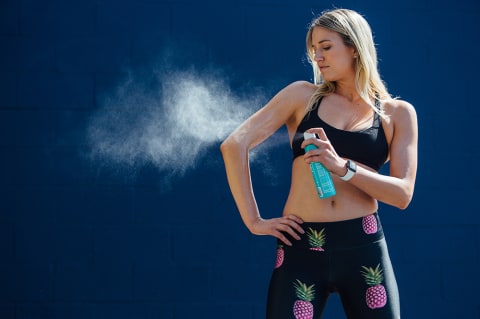Advertisement

By now, most of us know that Vitamin D is a healthy byproduct of time in the sun, but what exactly is it? And do you have enough?
Vitamin D is a hormone, and it’s the byproduct of a reaction that occurs when UV light strikes the skin. It’s responsible for helping regulate hundreds of other genes in the body, including those that balance mood, prevent heart disease, and absorb key nutrients like calcium and phosphorus. The medical community recommends 600 IU (international units) of Vitamin D3 a day, which comes from around 10-15 minutes of sun exposure to bare skin, sans sunscreen.
Nearly 50 percent1 of people have insufficient levels of Vitamin D, and an estimated 1 billion worldwide are Vitamin D deficient. Though 30 percent of those who have Vitamin D deficiency don’t exhibit any symptoms, it can lead to a slew of health issues2 like cardiovascular disease, depression, and dementia. Common early symptoms include muscle weakness and fatigue. (If you think you’re at risk, a simple screening will tell you.)
Researchers blame this ever-present Vitamin D deficiency on reduced outdoor activity and increased use of high-SPF sunscreen. And yet, physicians and scientists agree that we should continue to use sun protection, especially those that harness fresh ingredients like COOLA’s farm-to-face formulas.
So what’s a health-conscious sun-lover to do? Fear not: prevailing studies3 show that it is possible for people who use sunscreen daily to maintain their Vitamin D levels. You just have to use it effectively. Here are a few top tips on how to get more than enough Vitamin D while staying safe in the sun.
1. Move your indoor routines outside. (That includes your workouts.)

In order to ensure that you’re getting enough sunlight, make an effort to move your indoor routines outdoors in the warmer months. Ditch that treadmill run for a jog around your neighborhood, curl up with a good book under a tree instead of in bed, and treat yourself to a walk around the block after lunch instead of a dessert. Hiking is another great way to get your sun and exercise in during the summer months, and there is even evidence4 suggesting that exercise may feel easier when performed in a natural environment.
2. Stock up on the right sunscreen.

In a recent article for the Skin Cancer Foundation, dermatologist Dr. Anne Marie McNeill confirmed that those who use sunscreen religiously need not be concerned about vitamin D deficiency, stating, “No matter how much sunscreen you use or how high the SPF, some of the sun’s UV rays reach your skin. An SPF 15 sunscreen filters out 93 percent of UVB rays, SPF 30 keeps out 97 percent, and SPF 50 filters out 98 percent. This leaves anywhere from two to seven percent of solar UVB reaching your skin, even with high SPF sunscreens. And that’s if you use them perfectly.”
So every time you venture into the great outdoors, make sure you protect yourself with sunscreen that will keep the harmful rays out. Look for ones that are free of parabens, sulfates, and phthalates, which have been associated with hormone disruption and liver and kidney damage. COOLA’s Sport SPF 50 Guava Mango Sunscreen Spray avoids these nasties to deliver 80 minutes of protection. Plus, it’s water resistant and infused with antioxidants and organic ingredients like cucumber, algae, and strawberry extracts.
3. Cover up.

Shirts, hats, shorts, and pants reduce your risk of sunburn by 27 percent, and sunglasses are a necessary accessory to protect your eyes from UV radiation. Ensure that you don’t get burned by alternating time in direct sun with moments in the shade, especially if you’re outside when UV rays are most intense—between 10 a.m. and 4 p.m. Check the UV index before extended time outdoors, and consider moving back in if it’s above a 6 or 7.
4. Rethink your food and supplements.

Sometimes, of course, uncooperative weather and a busy routine make it impossible to get outside. When you’re indoors for long periods, consider adding more Vitamin D-rich foods to your diet like eggs and fatty fish, including tuna, mackerel, and salmon. But remember that these can never really provide you with the 600 IU your body needs to stay in tip-top shape, so consider adding a Vitamin D supplement to your routine if you’re concerned about a deficiency.
And thankfully, now you don’t have to worry about losing that natural glow. COOLA has created the world’s first Eco-Certified Cosmos Organic sunless tan product that’s full of skin-nourishing goodies like hibiscus, organ oil, and chamomile extract.
